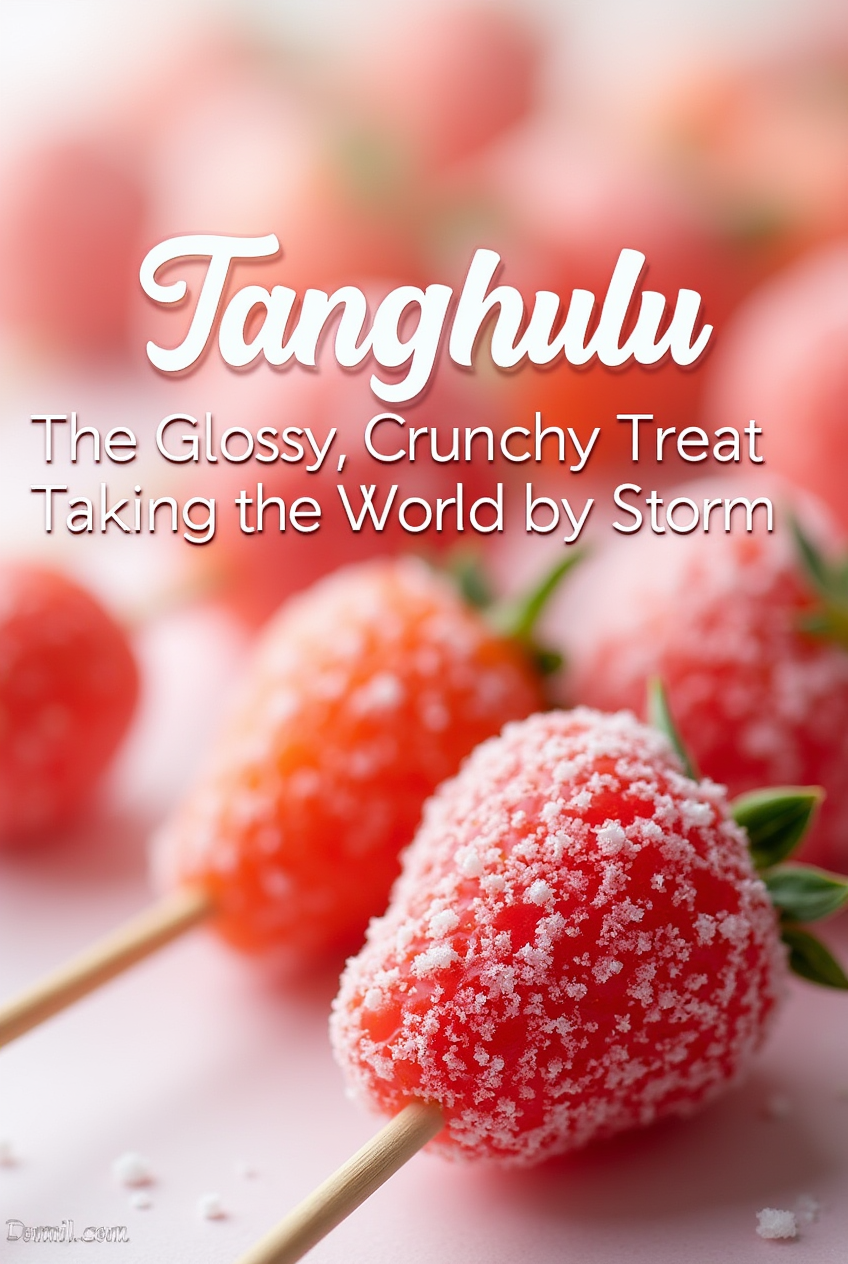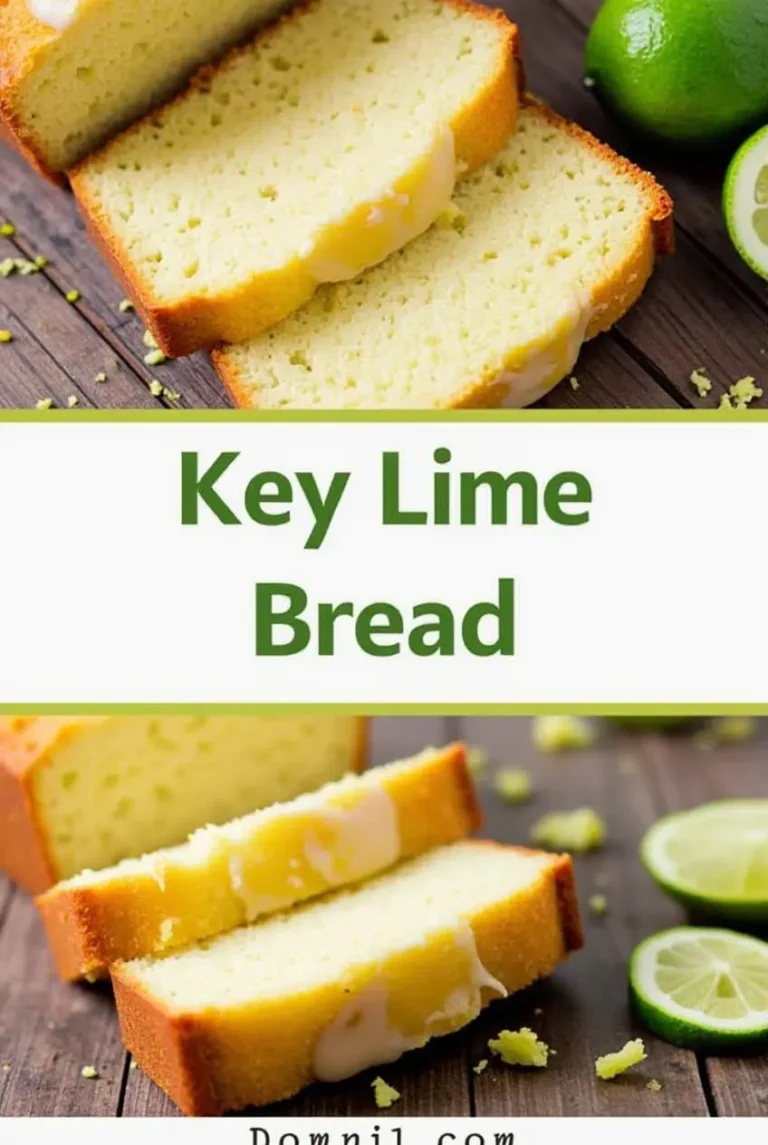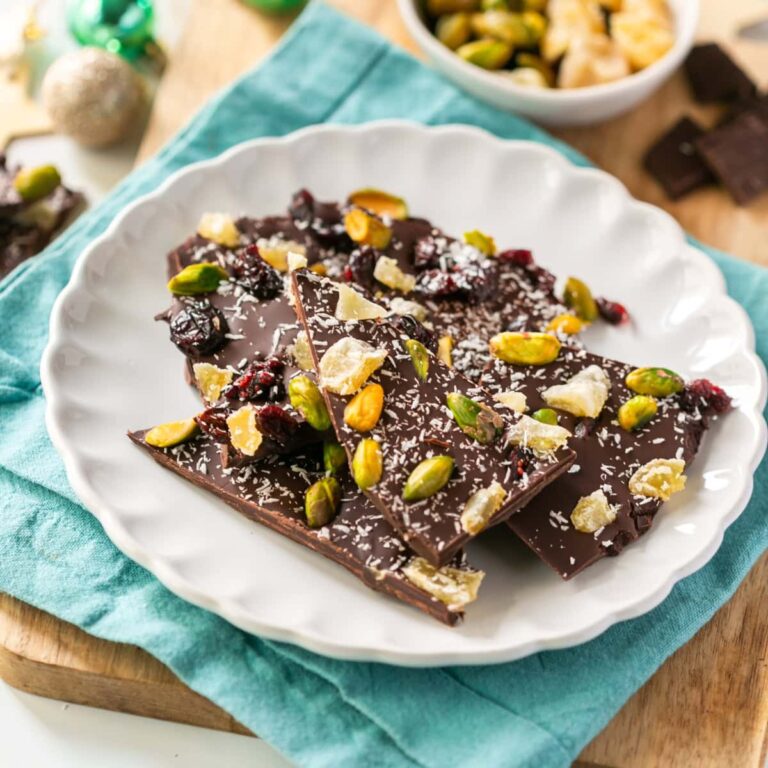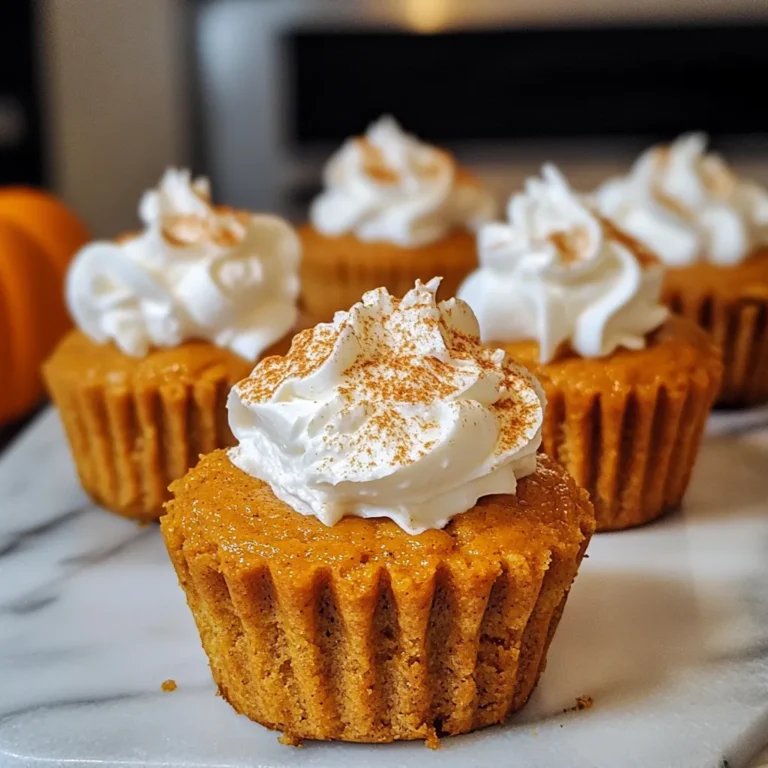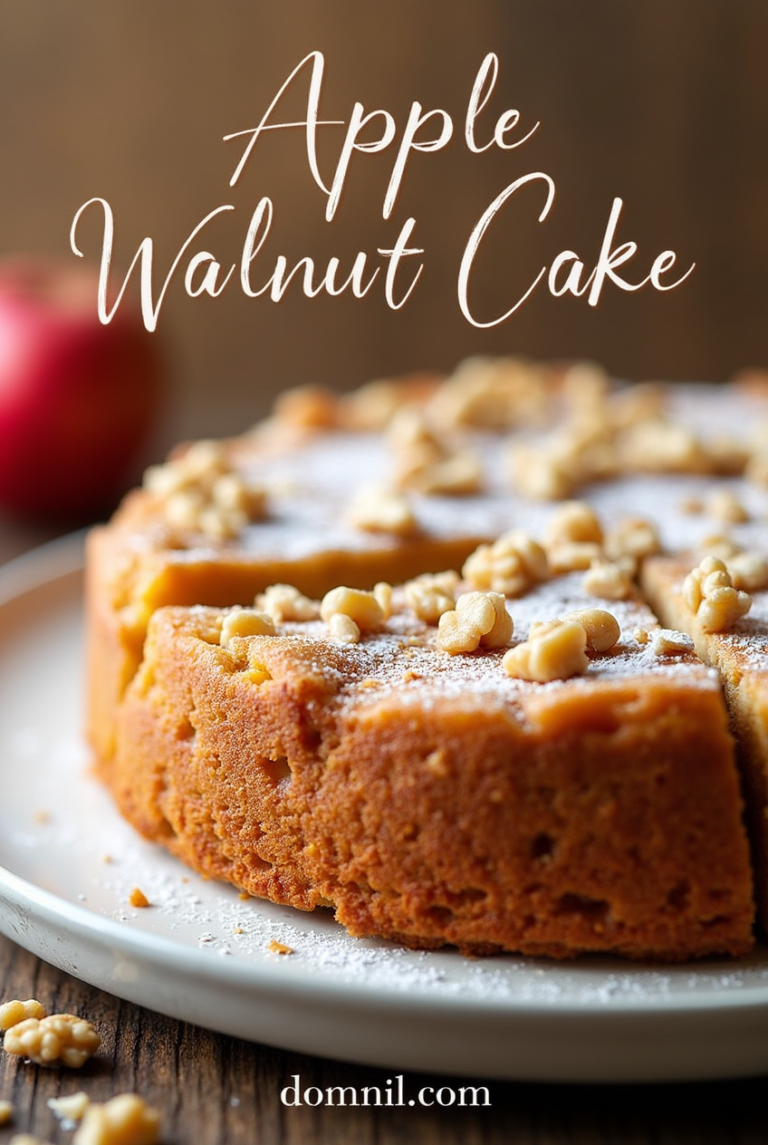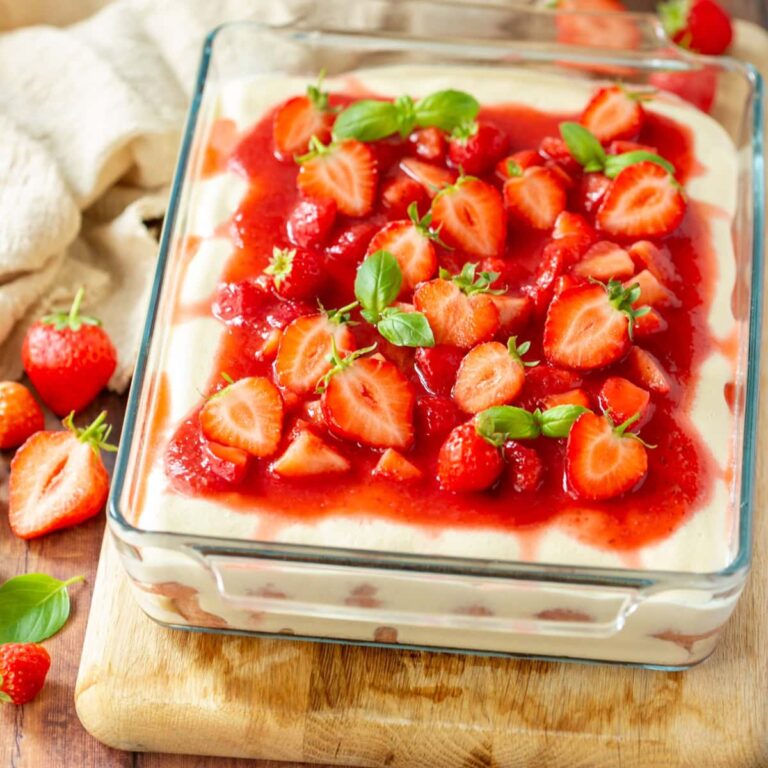Tanghulu: The Irresistibly Glossy, Crunchy Treat Taking the World by Storm
What is Tanghulu?
Let’s talk about something sweet, crunchy, and totally Instagram-worthy—Tanghulu. If you haven’t heard of it yet, you’re in for a treat—literally. Tanghulu is a traditional Chinese snack made by skewering fresh fruit and dipping it into a hot sugar syrup that hardens into a shiny, glass-like shell. Think of it as nature’s candy on a stick. It’s juicy on the inside, sweet and crackly on the outside. One bite and you get that crunch, followed by a rush of fruity goodness.
The name “Tanghulu” (糖葫芦) breaks down to “sugar gourd” in Mandarin. It’s often made with Chinese hawthorn berries, but these days you’ll see all kinds of fruit like strawberries, grapes, kiwi, blueberries, or even pineapple. Anything juicy that can handle the hot sugar gets the Tanghulu treatment.
It’s more than just a snack—it’s a sensory experience. The candy shell catches the light in a way that makes it sparkle, and the sound of that first bite? Chef’s kiss. Plus, it’s incredibly easy to make, which is why it’s become a viral trend on social media, especially TikTok and Instagram.

The History and Origins of Tanghulu
Tanghulu isn’t a new food trend. It’s actually been around for over 900 years! This sweet treat dates all the way back to the Song Dynasty (960–1279 AD). According to legend, one of the emperor’s concubines fell ill and refused to eat. Desperate to help her, a royal physician suggested skewering hawthorn berries and coating them in syrup to encourage her appetite. She loved them so much, she ate them every day—and lo and behold, she recovered. Word of the miracle snack spread quickly, and Tanghulu became a favorite across the empire.
Traditionally, Tanghulu was made using Chinese hawthorn berries, which are small, tart, and perfect for balancing the sweetness of sugar. Street vendors would skewer them on bamboo sticks and sell them in busy markets, especially in northern China. You could find them at temple fairs, festivals, and even school gates—a nostalgic treat for many Chinese children.
What’s fascinating is how Tanghulu hasn’t changed much over the centuries. Sure, the fruits have evolved, and the aesthetics have gone viral, but the core idea is still the same: simple ingredients turned into something magical with a bit of sugar and heat. It’s a great example of culinary tradition meeting modern-day creativity.
Why Tanghulu is So Popular Today
You might be wondering—why is Tanghulu suddenly all over your social feed? The answer is simple: it’s the perfect combo of taste, texture, and looks. In the age of food aesthetics, anything that sparkles and crunches is bound to go viral. The moment someone bites into a Tanghulu stick and that sugary shell cracks open? That’s ASMR gold. People can’t get enough of the sounds, the shine, and the satisfaction.
Social media platforms like TikTok, YouTube Shorts, and Instagram Reels have been flooded with Tanghulu videos. DIY versions, fruit swaps, rainbow skewers—you name it. Influencers and foodies alike love showing off their candy-coated creations, and viewers love watching the process. There’s something mesmerizing about watching sugar boil and fruit get transformed into edible art.
But it’s not just about the visuals. Tanghulu also delivers on flavor. That crunchy-sweet outer layer balances beautifully with the tartness or juiciness of the fruit inside. It’s one of those treats that’s surprisingly easy to make but looks like you put in a ton of effort. That makes it perfect for parties, potlucks, and cozy nights at home.
What also helps? It’s super customizable. You can choose your favorite fruit, adjust the sugar level, even experiment with color and flavorings in the syrup. Tanghulu is no longer just a street snack from China—it’s a global sensation that everyone wants to try at least once.
The Main Ingredients for Tanghulu
Here’s the beauty of Tanghulu—it doesn’t require a fancy list of ingredients. In fact, you only need three main things:
- Fresh Fruit: Traditionally, it’s hawthorn berries. But you can use strawberries, grapes, blueberries, cherry tomatoes, oranges, or even exotic fruits like dragon fruit or starfruit. The key is to choose firm, juicy fruit that can hold up when skewered and dipped in hot syrup.
- Granulated Sugar: This is the magic ingredient that turns into that shiny, glass-like shell. White sugar is best for a clear coating, but you can experiment with brown sugar or add flavorings if you’re feeling adventurous.
- Water: Just a little bit goes into the sugar syrup to help dissolve the sugar and bring it to the perfect temperature.
Optionally, you can add:
- Corn syrup or lemon juice to prevent crystallization.
- Food coloring for a more dramatic effect.
- Toppings like sesame seeds, chili flakes, or edible glitter.
When you combine sugar and water and heat it to the “hard crack” stage (about 300°F or 150°C), you get that signature crunch. But the real magic happens when that syrup cools instantly on the cold fruit. You’re left with a hard, transparent shell that shatters like glass.
Just remember—your fruit needs to be completely dry before dipping. Even a single drop of water can cause the syrup to seize or slide off.
The Role of Sugar Syrup in Making Tanghulu
Let’s talk sugar science for a second. The heart of Tanghulu lies in its syrup. It’s not just sugar and water—it’s a transformation. When sugar syrup hits that magical temperature (between 295°F and 310°F), it reaches what’s called the “hard crack stage.” That means when it cools, it hardens completely and gives you that signature crack when you bite into it.
Here’s why that matters: if you don’t hit that exact temperature, the syrup will either stay soft or become sticky. Too low, and it won’t harden. Too high, and it might burn. That’s why many Tanghulu fans swear by a candy thermometer to get it just right. But if you don’t have one, no worries—you can still do it old-school by dropping a bit of the syrup into cold water and watching if it turns brittle.
The syrup also acts as a sealant. It locks in the fruit’s moisture while giving it that dramatic glassy look. And if you get creative, you can infuse the syrup with flavors like vanilla, cinnamon, or citrus zest to make your Tanghulu extra special.
What’s cool is how something as basic as sugar can be so transformative. In just a few minutes, it turns from grains into liquid gold. And when that gold hugs your fruit? You get Tanghulu—a snack that’s as much fun to make as it is to eat.
The Variety of Fruits Used in Tanghulu
One of the best things about Tanghulu is that you’re not limited to just one type of fruit. Sure, hawthorn berries might be the original classic, but modern versions have taken this snack to a whole new level of creativity. The truth is, almost any firm fruit can be turned into Tanghulu, as long as it holds its shape and doesn’t release too much moisture.
Here are some of the most popular fruits used today:
- Strawberries – Probably the most viral Tanghulu fruit right now. Their natural sweetness and juicy texture, combined with the crunchy coating, are a match made in dessert heaven.
- Grapes – Red or green grapes work beautifully. They’re small, bite-sized, and naturally sweet. Plus, they hold up well under hot syrup.
- Blueberries – These create super cute mini-Tanghulu skewers, great for parties or kids.
- Kiwi slices – Slightly tangy and refreshing, kiwis offer a fun contrast to the sugary shell.
- Mandarin orange segments – A popular twist that gives you a citrusy burst with each bite.
- Cherry tomatoes – Yes, tomatoes! They add a surprising savory-sweet contrast that some people really love.
- Banana chunks or pineapple – For a tropical take, these fruits work well but must be very dry and firm to avoid the syrup sliding off.
It’s fun to experiment and mix up the fruits for visual variety—think colorful rainbow skewers with grapes, strawberries, and kiwi. Want to go extra fancy? Add edible flowers between fruits, or coat the finished Tanghulu in shredded coconut, sesame seeds, or even popping candy.
The possibilities are endless, and that’s exactly what makes Tanghulu so exciting to make and share. Everyone can customize their own stick, making it perfect for family cooking nights, dessert buffets, or themed parties.
Step-by-Step Guide to Making Tanghulu
Ready to try making Tanghulu yourself? Awesome—you’re going to love it. Here’s a super detailed, foolproof guide that walks you through the process from start to finish.
Ingredients You’ll Need:
- 2 cups of granulated sugar
- 1/2 cup of water
- 2–3 cups of fruit (your choice)
- Wooden skewers
- Candy thermometer (optional, but helpful)
Instructions:
1. Prep the fruit
Wash your fruit thoroughly, then dry it completely. And we mean bone-dry. Even the tiniest bit of moisture will ruin your sugar coating. Pat each piece of fruit with a paper towel and set it aside.
2. Skewer the fruit
Slide your chosen fruits onto the skewers. You can stick with one type per skewer or mix and match for fun.
3. Make the sugar syrup
In a heavy-bottomed saucepan, combine the sugar and water. Heat it over medium heat without stirring. Use a candy thermometer to monitor the temperature. You’re aiming for the hard crack stage—around 300°F (150°C). If you don’t have a thermometer, test by dropping a bit of syrup into cold water—it should harden instantly and break like glass.
4. Dip and coat
Once the syrup hits the right temperature, remove it from heat. Working quickly but carefully, dip each fruit skewer into the syrup. Tilt the pan if needed to coat the fruit fully. Let the excess drip off, then immediately place the skewer on a piece of parchment paper or a lightly greased baking sheet.
5. Let it harden
In just a few minutes, the syrup will cool and harden into a glossy shell. You’ll know it’s ready when you tap it and hear that sweet crack.
And that’s it! You just made Tanghulu. Eat it fresh for the best crunch, or store in a dry, cool place for up to a day.
Tips for Making Perfect Tanghulu
Even though the process is simple, making Tanghulu can be a bit tricky the first time around. Here are some game-changing tips that’ll help you get it perfect on your first try:
- Dry fruit is a MUST. Seriously, this is the #1 rule. Moisture will cause the syrup to slide off or crystallize. Use a clean kitchen towel or paper towels to dry each fruit thoroughly.
- No stirring the syrup. Once the sugar starts heating, do not stir it. This prevents crystals from forming, which can mess up the glossy finish.
- Use a candy thermometer. It removes the guesswork. The hard crack stage happens fast, and if you go too far, you’ll burn the sugar. Not far enough, and it’ll be soft and chewy.
- Work quickly but carefully. Sugar syrup is hot and sets fast. Have all your fruit prepped and skewered before you start cooking.
- Avoid high humidity. On humid days, the sugar shell might turn sticky. If you can, make Tanghulu in a dry kitchen environment.
Bonus tip: Want an even crunchier bite? Dip the skewer twice for a thicker shell—but be careful not to let the syrup build up too much, or it’ll be hard to eat.
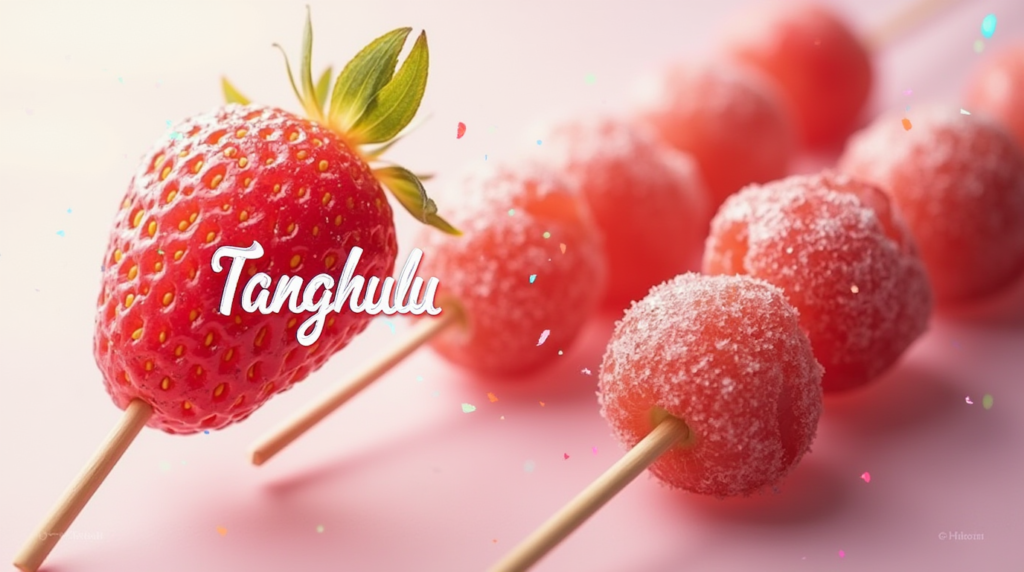
Common Mistakes to Avoid When Making Tanghulu
Making Tanghulu seems simple, but there are a few common pitfalls that can turn your sweet dream into a sticky mess. Here’s what to watch out for:
- Using wet fruit – This can’t be said enough: moisture and sugar syrup do not mix. The syrup won’t stick, or worse, it’ll seize and harden in the pot.
- Overheating the syrup – Burnt sugar tastes bitter and ruins the whole batch. Don’t walk away from the stove. Keep an eye on that thermometer.
- Undercooking the syrup – If it doesn’t hit the hard crack stage, you’ll end up with a gooey mess that never sets.
- Coating too slowly – Once off the heat, the syrup begins to thicken fast. Dip quickly or it’ll harden in the pot.
- Reheating syrup multiple times – If your syrup hardens before you’re done dipping, resist the urge to reheat it too many times. It can crystallize or caramelize.
- Crowding the skewers – Too much fruit per stick can make it top-heavy or cause the syrup to drip unevenly. Stick to 2–4 pieces max for best results.
Learning from these mistakes is part of the fun. Once you master the art of Tanghulu, it becomes a snack you’ll want to make again and again. Whether you’re doing it for a treat-yourself moment or showing off at a party, knowing these dos and don’ts will guarantee you get that perfect crunch every time.
Tanghulu in Street Food Culture
Street food is the heartbeat of many cultures, and in China, Tanghulu holds a special place in that rhythm. Walk through a bustling Beijing night market or visit a temple fair in Harbin during winter, and chances are, you’ll find a vendor standing next to a colorful rack of glossy, jewel-like skewers. These treats are often lined up in neat rows, their sugar shells glinting under market lights, attracting both kids and adults with their irresistible charm.
In northern China, especially during the colder months, Tanghulu becomes a nostalgic favorite. The sugar coating hardens beautifully in the crisp air, and the crunch is even more satisfying when it’s chilly outside. It’s a street snack that doesn’t need much promotion—just the sound of a bite echoing through the street is enough to draw a crowd.
Unlike many other sugary snacks, Tanghulu is relatively mess-free and easy to eat on the go. That makes it perfect for street markets, fairs, and outdoor festivals. It’s not uncommon to see school kids buying them after class, couples sharing one on a romantic stroll, or tourists taking their first crunchy bite while snapping a selfie.
It’s also more than just food; it’s an experience. Watching a vendor quickly dip skewers into bubbling syrup, skillfully rotating them to get the perfect coat, is a show in itself. For many people, the smell of caramelizing sugar mixed with winter air is the scent of childhood memories.
In today’s world of gourmet desserts and fusion foods, Tanghulu’s humble, unchanged recipe is a reminder that sometimes, the simplest things are the most delightful. It’s not just a snack—it’s a sweet slice of tradition served on a stick.
The Influence of Social Media on Tanghulu’s Popularity
Let’s face it—Tanghulu might’ve stayed a local Chinese favorite if it weren’t for the power of social media. But thanks to the likes of TikTok, Instagram, YouTube Shorts, and even Pinterest, this shiny, crunchy fruit treat has officially gone global.
It all started with a few influencers posting their homemade Tanghulu attempts. The sizzling sound of syrup hitting fruit, the close-up of that iconic crack when someone bites into it—it was ASMR heaven. People were hooked, not just by the taste, but by the entire aesthetic of it.
Food trends on TikTok tend to blow up when they’re visually satisfying and easy to replicate. Tanghulu checks both boxes. The glossy coating, the rainbow of fruit, the sparkle—it’s irresistible on camera. And the process of making it is just as entertaining to watch as it is to eat. That’s why videos featuring Tanghulu have racked up millions of views.
Creators have taken it even further, adding edible glitter, playing with exotic fruits, or even layering flavors in the sugar syrup. One viral trend involves making Tanghulu with spicy chili sugar or using sour candy for an extra zing. It’s DIY food fun at its best.
Even big-name chefs and bakeries have gotten in on the trend, introducing gourmet versions and Tanghulu-inspired desserts. But the heart of its social media popularity is still in the homes and kitchens of everyday food lovers who enjoy the joy of turning fruit and sugar into art.
Tanghulu’s Growing Popularity Outside of China
Ten years ago, you probably couldn’t find Tanghulu outside of a Chinatown. Fast forward to today, and it’s popping up in food festivals, farmer’s markets, and dessert cafes across North America, Europe, Australia, and beyond. From New York City to London, Seoul to Sydney, Tanghulu has traveled far from its roots.
Its appeal lies in its universal ingredients and adaptability. Almost every culture has a version of candied fruit, so Tanghulu feels both exotic and familiar. The simplicity of the recipe also makes it easy for international audiences to replicate at home.
Asian bakeries, bubble tea shops, and even Instagram-driven dessert bars are embracing Tanghulu, offering it with a modern twist—think matcha-dipped Tanghulu or sticks sprinkled with freeze-dried fruit dust. It’s even making appearances at weddings, parties, and food truck festivals as a trendy dessert option.
Food bloggers and travel influencers have helped boost its visibility, showing off where to find the best Tanghulu in cities around the world or teaching followers how to make it themselves.
Its cross-cultural success is also a sign of how global food culture has become. People everywhere are more open than ever to trying new dishes, especially ones that are visually exciting and easy to personalize. Tanghulu hits all those notes—it’s traditional, modern, easy to make, and fun to eat.
Different Fruits and Toppings for Tanghulu
By now, you know Tanghulu isn’t just about hawthorn berries anymore. If there’s one rule with this snack, it’s that there are no rules. Creativity is the name of the game, and fruit combinations are just the beginning.
Here are some exciting fruits to try:
- Raspberries and blackberries – Tart and sweet with a soft bite
- Melon balls (cantaloupe or honeydew) – Refreshing and light
- Apple slices – Firm and crunchy, perfect for the syrup
- Banana chunks – Slightly tricky but amazing when done right
But let’s take it even further. The outer coating is your blank canvas. Want to jazz it up? Try rolling the freshly dipped Tanghulu in crushed nuts, coconut flakes, edible gold dust, or colorful sprinkles. Some adventurous cooks add sea salt for a salted-caramel vibe or even a drizzle of melted chocolate once the syrup hardens.
Here are some fun topping ideas:
- Crushed pistachios
- White sesame seeds
- Rainbow sugar
- Matcha powder
- Pop rocks for a fizzy surprise
Another trend is layered coating. Dip your fruit once for a clear crunch, then again in a colored sugar mix or flavor-infused glaze. Some even create dual-layer Tanghulu, combining citrus sugar and spicy syrup for a flavor explosion.
Whether you’re going traditional or totally outside the box, Tanghulu is your edible playground. It’s sweet, fun, and always a conversation starter—especially when you bring your own creative version to the table.
How to Experiment with Flavors and Coatings
Let’s get into the fun part—customizing Tanghulu beyond just fruit. Sure, the classic version is amazing, but why stop there? With a few simple tweaks, you can create endless flavor combos that turn this humble snack into a gourmet treat.
Flavoring the Sugar Syrup
Your sugar syrup doesn’t have to be basic. Add flavor extracts like:
- Vanilla or almond – for a dessert-like finish
- Mint – for a fresh kick
- Lemon or orange zest – adds citrusy brightness
- Cinnamon or clove – perfect for holiday versions
Just stir these in at the end of the cooking process before dipping. A tiny bit goes a long way, especially with strong flavors.
Infused Sugar Experiments
Want to make your Tanghulu extra Instagram-worthy? Try flavor-infused sugar coatings:
- Add rosewater for a floral twist.
- Use lavender for a calming, elegant vibe.
- Mix in matcha powder for a Japanese fusion style.
Dual Coating Techniques
Dip the fruit in your clear sugar syrup, let it cool, then brush lightly with a second coating—chocolate drizzle, flavored glaze, or colored sugar syrup. The result? Double the visual drama and flavor layers.
Tanghulu is one of those rare recipes that’s incredibly forgiving. If your first batch doesn’t go perfectly, you still end up with a delicious snack. And with every new try, you get the chance to level up your creativity. Whether you’re keeping it simple or going full foodie mode, Tanghulu is the kind of fun that’s meant to be shared.
Fusion Tanghulu: Combining Traditional and Modern Flavors
Tanghulu might have ancient roots, but in the age of culinary creativity, it’s getting a serious glow-up. Fusion Tanghulu is where the old-school charm meets modern flavor twists—and the results are nothing short of delicious.
So, what exactly is fusion Tanghulu? It’s the traditional crunchy sugar-coated fruit, elevated with contemporary ingredients and ideas borrowed from other cuisines. Picture Tanghulu dipped in matcha glaze. Or how about a drizzle of chili-lime syrup over mango Tanghulu for a spicy-sweet Mexican-Asian mashup?
Modern Flavor Combinations to Try:
- Strawberry + Balsamic glaze Tanghulu
- Grapes + Crushed candy cane coating for the holidays
- Banana + chocolate Tanghulu for a frozen banana candy vibe
- Pineapple + Tajin or chili powder sugar coating
- Kiwi + coconut flakes for a tropical fusion
Some folks are even making Tanghulu “sushi rolls,” where fruit is rolled in sticky rice and then dipped in sugar syrup. Others layer Tanghulu skewers with marshmallows, mochi, or brownie bites in between fruits.
Fusion Tanghulu is especially popular among food bloggers and chefs who love putting a signature spin on traditional treats. The mix of old and new is appealing to both younger generations and foodies looking for that next viral bite.
And here’s the best part—there are no rules. If it works, it works. Tanghulu’s adaptability is what makes it so exciting. It’s the kind of snack you can reinvent again and again, each time with a new flavor twist that reflects your personal taste or cultural background.
Is Tanghulu Healthy?
Now, let’s get real for a second—Tanghulu might be made from fruit, but it’s not exactly a health food. The sugary coating, while delicious, is pure candy. So, is Tanghulu healthy? The answer depends on your perspective and how often you indulge.
The Good News:
- Fruit is the base. Fresh fruit offers vitamins, fiber, and antioxidants, depending on what you use.
- Portion control is easy. A skewer or two satisfies your sweet tooth without overloading on sugar.
- It’s homemade. You control the ingredients, which means no preservatives or hidden chemicals.
The Not-So-Great News:
- High sugar content. That shiny coating is literally crystallized sugar, which can spike blood sugar and lead to dental issues if eaten frequently.
- Empty calories. While fruit has nutrients, the syrup doesn’t contribute anything beneficial beyond flavor.
- Addictive sweetness. Tanghulu is so tasty, it’s easy to go overboard without realizing how much sugar you’re actually eating.
In short, Tanghulu is best enjoyed as an occasional treat. It’s a better choice than store-bought candy packed with artificial additives, but it still falls into the dessert category. Want to make it a bit healthier? Use fruits with lower sugar content (like berries), skip extra toppings, or try a thinner sugar coating.
It’s all about balance—just like that perfect bite of Tanghulu.
The Nutritional Value of Tanghulu
Let’s break it down a bit further. Here’s what you can expect in terms of nutrition from a standard Tanghulu skewer:
| Nutrient | Approximate Amount per Skewer |
|---|---|
| Calories | 100–180 (varies by fruit) |
| Sugar | 15–30g |
| Carbohydrates | 20–35g |
| Fiber | 1–3g |
| Vitamin C | 5–15% of Daily Value (DV) |
| Fat | 0g |
| Protein | 0–1g |
The fruit inside provides the vitamins and fiber. Strawberries, for instance, are rich in Vitamin C and antioxidants. Grapes contain resveratrol, which is heart-healthy. But remember—the sugar coating is just that: sugar. Pure, quick-burning carbs.
If you’re watching your sugar intake, diabetic, or managing your weight, it’s a good idea to treat Tanghulu as a rare indulgence rather than a daily snack.
The Risks of Overindulging in Tanghulu
As tasty as Tanghulu is, going overboard comes with a few downsides. Sugar addiction is real, and when something is this delicious and easy to snack on, it’s easy to cross the line from treat to habit.
Here’s what to watch out for:
- Tooth sensitivity or cavities. That hard sugar shell can be rough on your enamel, especially if you’re eating multiple skewers a week.
- Blood sugar spikes. The high glycemic index of the sugar coating can lead to energy crashes, especially if you eat Tanghulu on an empty stomach.
- Cravings for more sugar. The more sugar you eat, the more you crave it. Tanghulu’s quick sugar hit can lead to binge eating if you’re not mindful.
- Burn risk while cooking. On the prep side, sugar syrup is extremely hot and can cause serious burns if it splashes on skin. Always be careful when dipping your fruit.
Like most sweets, moderation is key. Tanghulu isn’t the enemy—but like all desserts, it’s best enjoyed in balance with a healthy diet.
The Fun and Satisfaction of Making Tanghulu
Let’s end on a high note—because honestly, Tanghulu is one of the most fun snacks you can make. It’s interactive, creative, and incredibly satisfying. Whether you’re doing it solo on a rainy day or hosting a Tanghulu party with friends, the process itself is part of the joy.
Making Tanghulu gives you that “I made this!” kind of pride. You get to choose the fruits, prep your skewers, stir your syrup, and watch your shiny creations come to life. The moment you hear that crack from your first successful batch? Pure dopamine.
It’s also a hit with kids. They love picking their favorite fruits, watching the sugar bubble, and getting messy in the most delightful way. Tanghulu is basically an edible science experiment with delicious results.
Plus, it’s super shareable. Bring a tray to your next get-together and watch them disappear. They’re great for baby showers, birthday parties, school events, or just as a unique date-night dessert.
In a world full of over-the-top, overpriced desserts, Tanghulu stands out for being simple, stunning, and seriously fun.
Essential Tools to Make Tanghulu
1. Heavy-Bottom Saucepan or Pot
- Needed to evenly heat and boil the sugar syrup without burning.
- Choose a pot that distributes heat well and has high sides to prevent bubbling syrup from spilling.
2. Candy Thermometer (Highly Recommended)
- This tool ensures your sugar syrup reaches the hard crack stage (around 300°F / 150°C).
- Helps prevent undercooking (which leads to sticky syrup) or overcooking (which burns the sugar).
3. Wooden or Bamboo Skewers
- Used to hold and dip the fruits. Bamboo skewers work best due to their sturdiness and heat resistance.
4. Baking Sheet or Tray
- A place to rest your skewers after dipping. Line it with parchment paper or lightly grease it to avoid sticking.
5. Parchment Paper or Silicone Mat
- Helps keep your finished Tanghulu from sticking to surfaces as it cools.
6. Slotted Spoon or Tongs (Optional)
- Can be used to help coat the fruit or remove skewer drips quickly and cleanly.
7. Mixing Bowl and Paper Towels
- Use to wash and completely dry the fruit. Drying is critical—wet fruit will ruin the sugar coating.
8. Measuring Cups
- To measure your sugar and water precisely for consistent syrup results.
9. Cooling Rack (Optional)
- Great for airflow and faster hardening after dipping the skewers.
10. Cold Water Bowl (If No Thermometer)
- For testing syrup readiness. Drop a bit of syrup into cold water—if it hardens and cracks, it’s ready.
Conclusion: Why You Should Try Tanghulu
At the end of the day, Tanghulu is more than just a snack. It’s a sweet slice of culture, tradition, and creativity wrapped into one glossy, crunchy bite. From ancient dynasties to TikTok fame, it has stood the test of time—and now, it’s yours to try.
Whether you stick with hawthorn berries or mix it up with your own fruit combos, the result is always satisfying. It’s beautiful, delicious, and surprisingly easy to make. Plus, you get to control what goes in it, which makes it feel even more special.
So go ahead—grab some fruit, boil some sugar, and get dipping. Your first batch might be messy, but your second will be magic. Tanghulu is more than just a treat. It’s a whole vibe.
FAQs
1. What fruits are best for making Tanghulu?
Strawberries, grapes, blueberries, cherry tomatoes, and kiwi are popular. Just make sure they’re firm, fresh, and completely dry before dipping.
2. Can I make Tanghulu without a candy thermometer?
Yes! Use the cold water test. Drop a bit of syrup into ice water—if it hardens immediately and cracks, it’s ready.
3. How long does Tanghulu last once made?
Tanghulu is best enjoyed fresh within a few hours. You can store it for up to 24 hours in a dry, cool area, but the coating may lose its crunch.
4. Can I use other types of syrup for Tanghulu?
Traditional Tanghulu uses plain sugar syrup, but you can experiment with honey, maple syrup, or flavored sugars. Just make sure they reach the hard crack stage.
5. Is Tanghulu safe for kids?
Yes, but supervision is key—especially during the cooking process. Also, be cautious with very hard coatings for younger kids to avoid a choking hazard.

